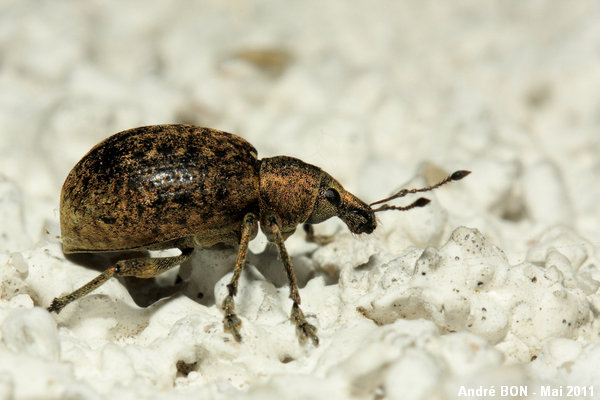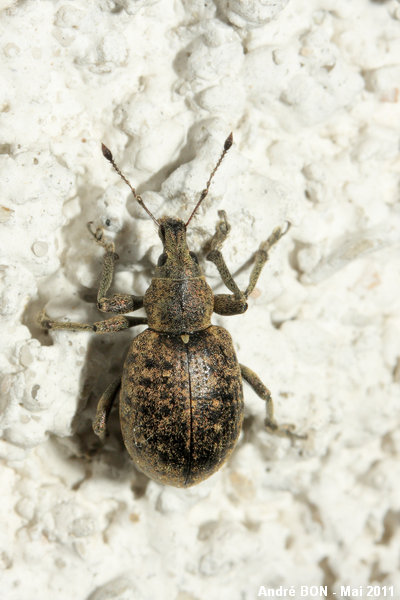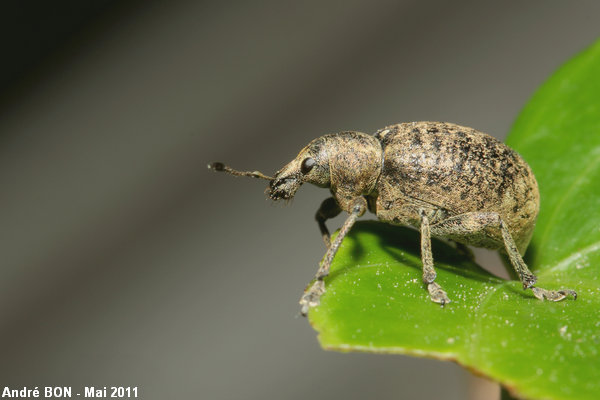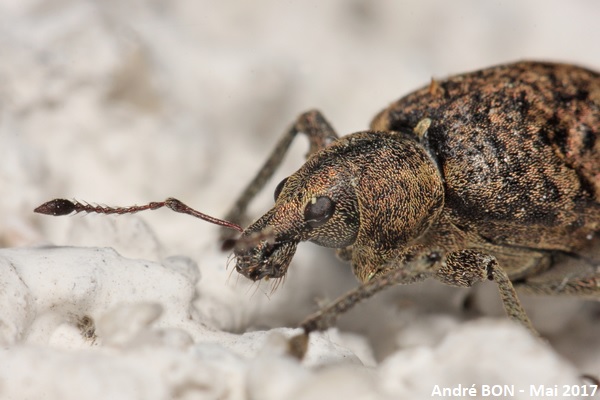



| Liophloeus tessulatus (Müller, 1776) |




|
|
Scientific name: Liophloeus tessulatus (Müller, 1776) Common name: French name: Charançon du lierre Order: Coleoptera Family: Curculionidae Wingspan : 7 to 11 mm from the axis of the eyes to the back of the elytra. Biotope: Many habitats from damp meadows to mountains, often observed on Common Ivy (Haedera helix), Common Hogweed (Heracleum sphondilium), Coltsfoot (Tussilago farfara), Creeping Thistle (Cirsium arvense), etc. Geographic area: Europe and Asia, from the British Isles to Siberia. Observation period : Adults are observed from spring to late summer. The larvae, which are whitish with a brown head, grow in the soil, moving down deeper in winter. They only appear at the adult state after two or three years under the ground. |
Liophloeus tessulatus is a large size weevil which moves slowly and cannot fly. The elytra are not totally separated. The body is covered with scales which are variable in colour, most often copper-coloured, making a uniform global colour or a uniform pattern of small patches. Some old weevils, having lost all their scales, appear completely black. The pronotum, with rounded lateral edges, is wider than long. The first article of the antenna is shorter than the maximum width of the pronotum. There are small rounded lumps on the under side of the fore femora. Liophloeus tessulatus can mime death (catalepsy) to escape from a predator. This species can reproduce by parthenogenesis, meaning that, in some cases, females can reproduce by laying eggs without any action of males. Adults feed on leaves and larvae feed on roots. The Black Vine Weevil (Otiorhynchus sulcatus) has the first article of the antenna which is longer than the maximum width of the pronotum. |
| [To know more about the Liophloeus tessulatus] [Next picture] [Top] |

|
There is a wall covered with Ivy a few meters away from the place where I have shot this picture. |
| [To know more about the Liophloeus tessulatus] [Next picture] [Previous picture] [Top] |

|
This upper side view clearly shows the pronotum which is wider than long. You can see that the first article of the antenna is shorter than the maximum width of the pronotum. |
| [To know more about the Liophloeus tessulatus] [Next picture] [Previous picture] [Top] |

|
The almost immobility of this weevil makes photos very easy to shoot. Here it is on an Ivy leaf. |
| [To know more about the Liophloeus tessulatus] [Previous picture] [Top] |

|
Close-up view to clearly see the shape of the antennae. |